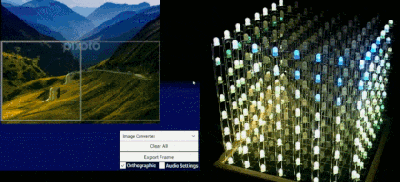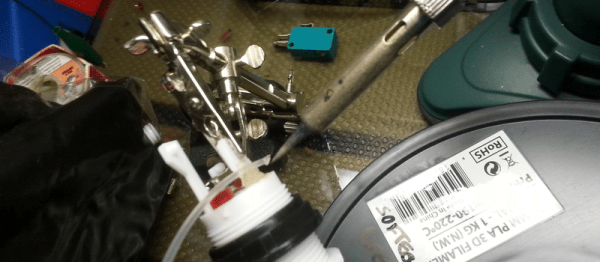RFID was supposed to revolutionize asset tracking, replacing the barcode everywhere. Or at least that was the prediction once tags got under five cents apiece. They still cost seven to fifteen cents, even in bulk, and the barcode is still sitting pretty. [Chouchang (Jack) Yang] and [Alanson Sample] of Disney Research hope to change that.
Instead of tagging every electronic device, they use whatever electromagnetic emissions the device currently produces when it’s powered up. What’s surprising is not that they can tell an iPhone from a toy lightsaber, but that they can tell the toy lightsabers apart. But apparently there’s enough manufacturing and tolerance differences from piece to piece that they appear unique most of the time.
The paper (PDF) goes through the details and procedure. The coolest bit? The sensor they use is an RTL-SDR unit with the radio-mixer front end removed and replaced with a simple transformer. This lets them feed baseband (tuning from 0 to 28.8 MHz) straight into the DAC ADC and on to the computer which does the heavy math. Sawing off the frontend of a TV tuner is a hack, for those of you out there with empty bingo cards.
If you like statistics, you’ll want to read the paper for details about how they exactly do the classification of objects, but the overview is that they first start by figuring out what type of device they’re “hearing” and then focusing on which particular one it is. The measure that they use ends up being essentially a normalized correlation.
While we’re not sure how well this will scale to thousands of devices, they get remarkably good results (around 95%) for picking one device out of five. The method won’t be robust to overclocking or underclocking of the device’s CPU, so we’re concerned about temperature and battery-voltage effects. But it’s a novel idea, and one that’s ripe for the hacker-rebuild. And for the price of an RTL-SDR, and with no additional per-tag outlay as with an RFID system, it’s pretty neat.
Thanks [Static] for the tip! Via Engadget.




 We’re not just talking about driving the LEDs themselves at a low level, but
We’re not just talking about driving the LEDs themselves at a low level, but 












